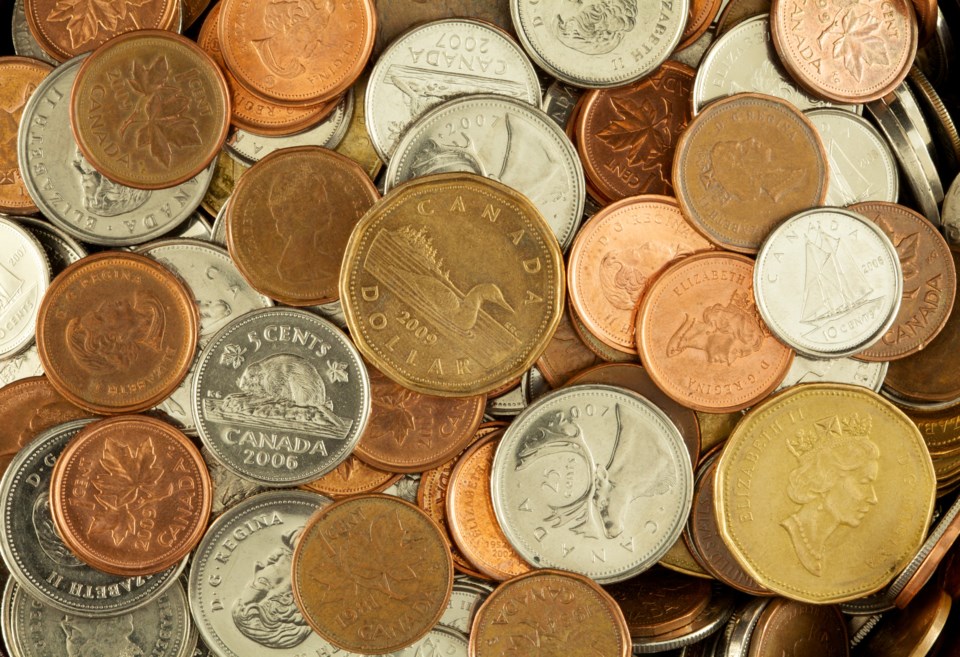In April, Research Co. and Glacier Media reviewed the way Canadians are making purchases. We saw some changes since 2020, when the COVID-19 pandemic left many scrambling to avoid all types of contact with other human beings and relying on debit and credit cards more often than usual. Cash is back as a form of payment for some Canadians, but nowhere near the levels of decades past.
Our coins and bills are expected to undergo a significant transformation in the next few years. Canada’s most used banknote, the $20, may feature a different face, even if many Canadians are not particularly enthralled about Prince Charles becoming monarch.
Next year, our country will mark 10 years without the presence of a functioning one-cent coin in our pockets and purses. Earlier this month, we asked Canadians about the penny’s demise. Across the country, 71 per cent of residents agree with the Canadian government’s decision to take the one-cent coin out of circulation in February 2013, down four points since a similar survey conducted in November 2019. The number of loyal fans who disagree with the end of the penny remained at 19 per cent.
Generation X appears to be feeling more nostalgic about the one-cent coin, with 65 per cent of Canadians aged 35 to 54 supporting the abolishment of the penny. The proportions are higher among their counterparts aged 55 and over (72 per cent) and aged 18 to 34 (74 per cent).
Regionally, three in four residents of Saskatchewan and Manitoba (75 per cent) are happy with the end of the one-cent coin. The numbers are lower in Atlantic Canada (73 per cent), Ontario (71 per cent), Quebec (also 71 per cent), Alberta (69 per cent) and British Columbia (65 per cent).
One curious aspect of our feelings towards the penny is related to political allegiance. While the decision to discard the one-cent coin came under a Conservative government, supporters of this party are not as convinced about it. While 66 per cent of Tory voters agree with the end of the penny, the proportion is higher among Canadians who supported the New Democratic Party (NDP) (75 per cent) or the Liberal Party of Canada (80 per cent) in the 2021 federal election.
In the last few years of its existence, the penny was practically absent from most modern machinery. Parking meters, vending kiosks and transit vehicles would usually not take one-cent coins, and the once ubiquitous trays at convenience stores became barren. A similar situation has ensued for the nickel, which sometimes goes through slots without providing even a minute of parking bliss.
In late 2019, 36 per cent of Canadians supported a plan to take the five-cent coin out of circulation, while 55 per cent expressed reservations. This year, the proportion of abolishers of the nickel has risen by four points to 40 per cent, while the group of Canadians who want to keep it in circulation has dwindled by six points to 49 per cent.
Again, generation X is more resistant to change. While 38 per cent of Canadians aged 35 to 54 are ready to abolish the nickel, the proportions are higher among their counterparts aged 18 to 34 (43 per cent) and aged 55 and over (47 per cent).
Quebec remains the one area of Canada where residents are consistent in their views on the nickel. This year, 49 per cent of Quebecers disagree with abandoning this coin, up two points since 2019. Support for the continuation of the nickel is stronger in other areas, but not in the same level as previously observed. Fans of Canada’s five-cent coin fell by three points in British Columbia (52 per cent), by four points in Alberta (46 per cent) and by five points in Saskatchewan and Manitoba (58 per cent). The drops are more drastic in Ontario (down 11 points to 47 per cent) and in Atlantic Canada (down 20 points to 39 per cent).
At this stage, there is no clarity on where the federal government plans to go with the nickel, even if many signs point to elimination. In 2016, under a majority Liberal government, a memorandum produced by the federal Department of Finance stated the obvious: there are virtually no goods or services that can be acquired for five cents. In 1914, the purchasing power of the five-cent coin in Canada was slightly higher than that of a loonie in this century. Those days are not likely to return.
In the end, any decision on the nickel will be economical and not nostalgic. When the federal government realized that creating new pennies cost 1.6 cents per piece, it was easy to say goodbye. Right now, when thinking about the five-cent coin, Canadians are moving to the side of abolition, even if they are not yet near a majority.
Mario Canseco is president of Research Co.
Results are based on an online study conducted from May 22 to May 24, 2022, among 1,000 adults in Canada. The data has been statistically weighted according to Canadian census figures for age, gender and region. The margin of error, which measures sample variability, is plus or minus 3.1 percentage points, 19 times out of 20.



